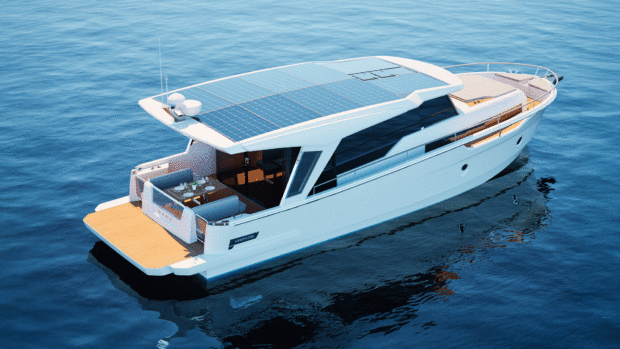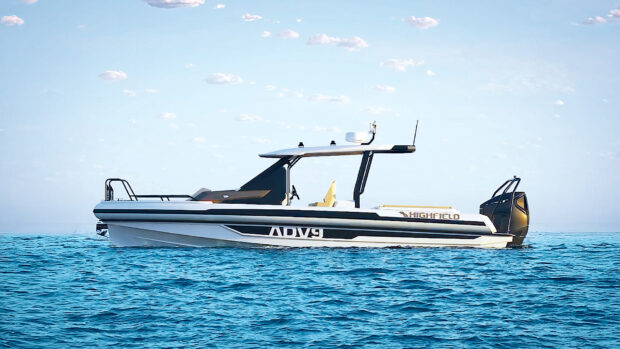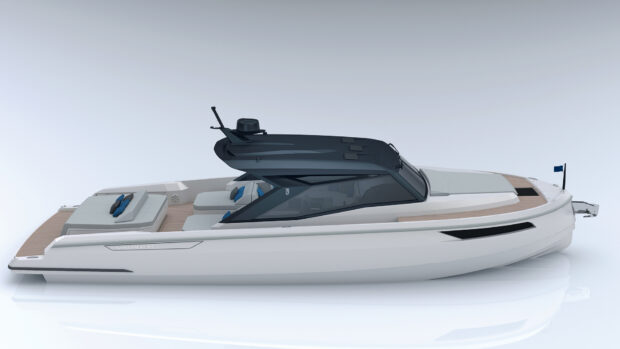So that you can feel confident navigating in shallow and deep waters, Richard Langdon shares his step-by-step guide to setting up depth sounders.
Knowing the depth of water around your boat is critical, especially in shallow areas. Depth sounders have made this a lot easier in recent years but you need to understand what they are actually telling you.
When the transducer is installed (the device that sends and receives the sound waves), it doesn’t arrive ready calibrated to your boat, so the depth being displayed is from wherever the transducer is fitted down to the sea bed – I call this the ‘out of the box value’.
That’s all well and good but it is NOT the true depth of water (from the surface to the seabed), nor is it the depth of water under your boat (the distance between the lowest part of your boat and the seabed).
Measurements for setting up depth sounders
Most depth sounders have an offset setting in the menu, allowing you to add or subtract a fixed measurement to take account of where the transducer has been mounted and whether you want it to show true depth or depth below your boat.
Before doing this you first need to know three measurements:
- Your boat’s draft (measured from the waterline to the deepest point – usually the tips of the propellers or bottom of the keel on a shaftdrive boat or the bottom of the skeg on a sterndrive/outboard one);
- The distance from the waterline down to the transducer;
- The distance from the transducer to the lowest part of the boat (you can calculate this by subtracting the second figure from the first).
Once you know these measurements you can go to the settings menu of your sounder and input one or both offset values.
To show the true depth you will need to add the distance from the transducer to the waterline, to show depth under the boat you will need to subtract the distance from the transducer to the lowest part of your boat.
There are times when I like the sounder to show the true depth, usually when using depth as a primary source of navigation, such as following a charted contour line.
However, in this mode you must remember to factor in how much your boat draws to ensure you don’t run aground.
When set up like this, it is also worth checking the sounder’s readings match the total depth by using a weighted line, knotted at 1m spacings.
However, most of the time I prefer to have the sounder displaying the depth of water under the boat, so if the sounder is showing 2m, I know I have a full 2m of water under the keel/propellers.
To do this you need to use the same offset settings menu but this time deduct the depth from the transducer down to the deepest part of the boat.
This will now be displaying a lower value than both the out of the box setting and the true depth but crucially it will be an accurate reading of what’s below the lowest point of your boat.
1. Locate the transducer
Before measuring the offset, you first need to locate your boat’s transducer. On larger craft this is usually a circular through-hull fitting somewhere under the boat.

Photo: Richard Langdon
On smaller boats like this one it’s often attached to the transom instead.
2. Measurements
When your boat is out of the water, measure the draft with the drive in its down position, the transducer distance below the waterline (blue line) and either calculate or measure the transducer distance above the deepest part of the boat.
Article continues below…

Best depth sounder models from handheld to top of the range

Raymarine Element 7HV with HV100 Transducer: Tried and tested review
3. Standard setting
When first fitted, depth sounders will measure the depth from the transducer (red dot) to the sea bed. This is really unhelpful as it is neither the true depth nor the depth of water under the boat/propeller.

Photo: Richard Langdon
4. Applying offset
The safest setting is to show the depth of water under the lowest part of your boat. To do this you need to apply a negative offset equivalent to the transducer distance above the lowest point (red line).

Photo: Richard Langdon
5. True depth
Sometimes you want to show the true depth, for instance when following a charted contour line. This time you need to apply a positive offset equivalent to the transducer distance below the waterline.

Showing the true depth is helpful when following a charted contour line. Photo: Richard Langdon
6. Physical check
Either measure the true depth using a weighted line or position the boat over a charted depth at a given state of tide. The figure should match the true depth shown by your sounder.

Photo: Richard Langdon.









